Idea by
Gabriele Pitacco
gp-a.it
Call for ideas 2020
M.I.R.A. Augmented Reality Immersive Museum
M.I.R.A. Augmented Reality Immersive Museum
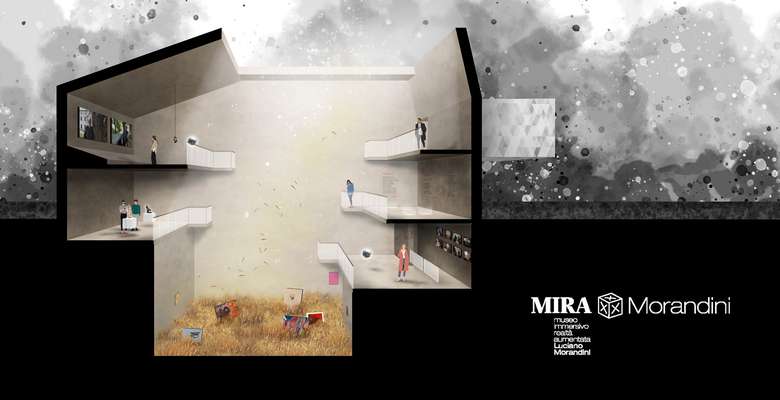
- New alliances
MIRA sets a new alliance between architecture and technology: it makes possible to design and experience meta-spaces and non-physical based spaces. It gives both architects and user the possibility to imagine and experience spaces to (literally) fly over the foundations of architecture, to walk through its walls and boundaries and it can be experienced freely, without cables, like real museum spaces.
MIRA is a fully working prototype of how architects can think AR/VR/XR as not just a tool to visualize physical spaces, but as a final product, something to design, with attention to the spatial experience.
The prototype is part of the project "Hacking Real Space" funded by the Friuli Venezia Giulia Region on the Call of the European Fund POR FESR FVG 2014-2020, Action 2.1b.2 "Grant for the financing of personalized acceleration and company consolidation programs, aimed at the entrepreneurial development of projects of cultural value, aimed at cultural and creative companies".
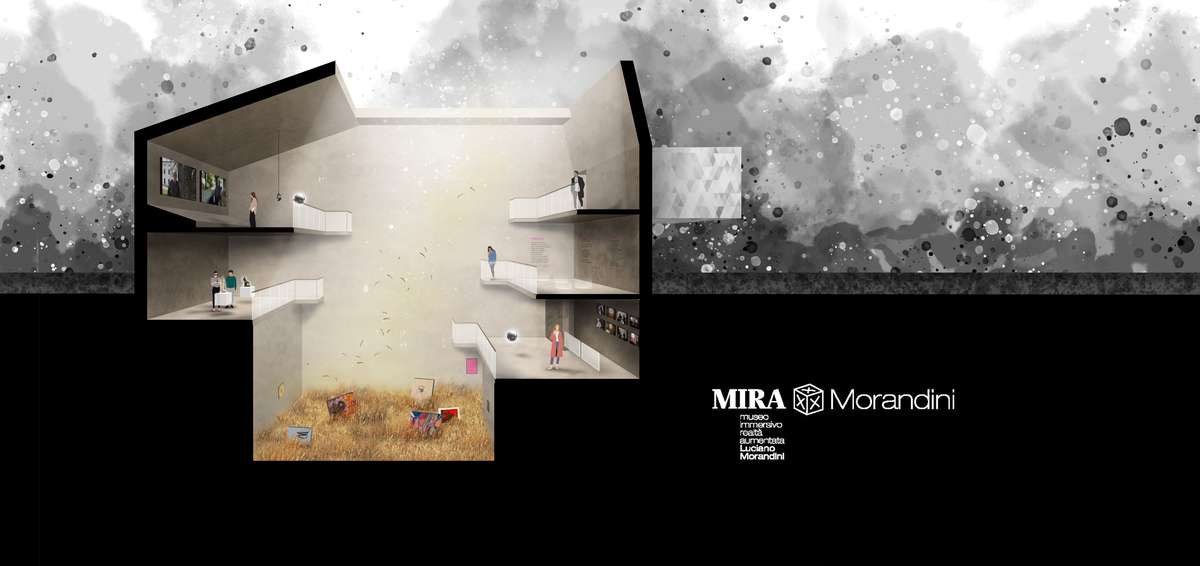
The visitor is immersed in a world that does not follow the same rules as the real one, where existing physical elements and virtual elements interpenetrate and complement each other. Once worn the virtual reality headset (the latest-generation Oculus Quest, released in May 2019), the space multiplies in height, generating further floors which divide, move away from each other and expand into the virtual space to create an exciting central space: a triple height void
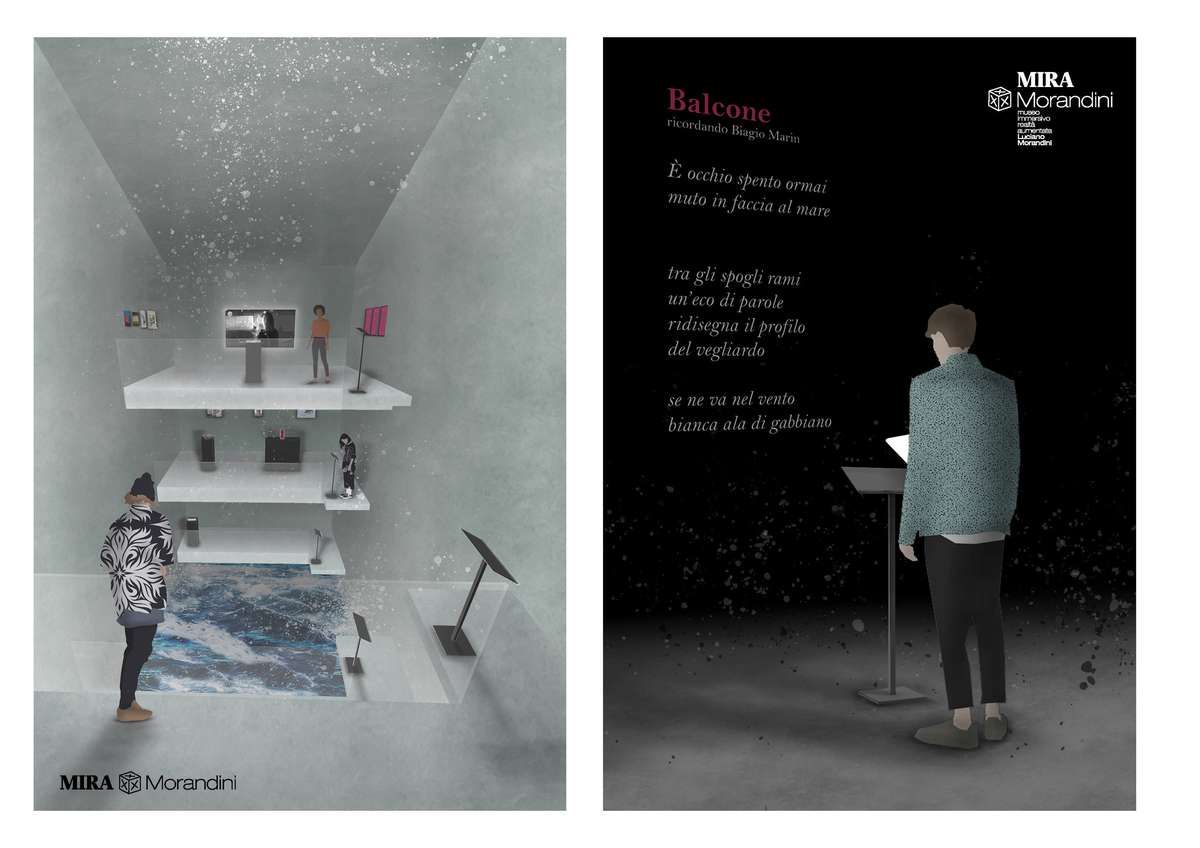
The central void allows the user to perceive the museum in its entirety and provide orientation and points of reference.
The museum is designed in sections as a sequence of floors, cut by a diagonal beam of light entering from the roof. Light creates a central void that defines a series of floors staggered in space, a "raumplan" of spaces with different size, height and character. Spaces tailored on the works exhibited and, at the same time, visually connected to each other.
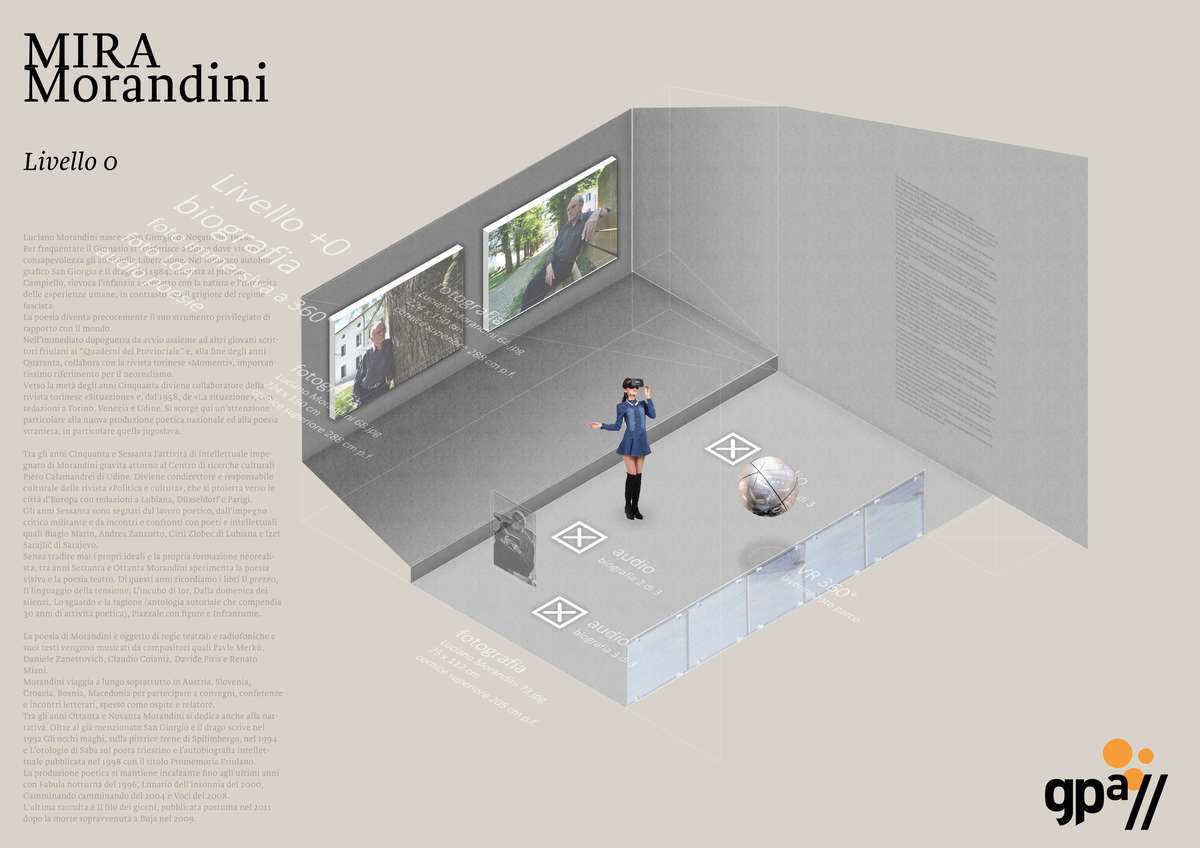
Movement between the different levels is possible through a series of virtual elevators, portals for teleportation -quoting Star Trek- which allow you to jump from one floor to another, almost immediately.
The width of the central void, while being shifted in space, is always constant: there is a fixed dimensional relationship between the various planes, obtained - in complementary pairs - by the subdivision of the real floor.
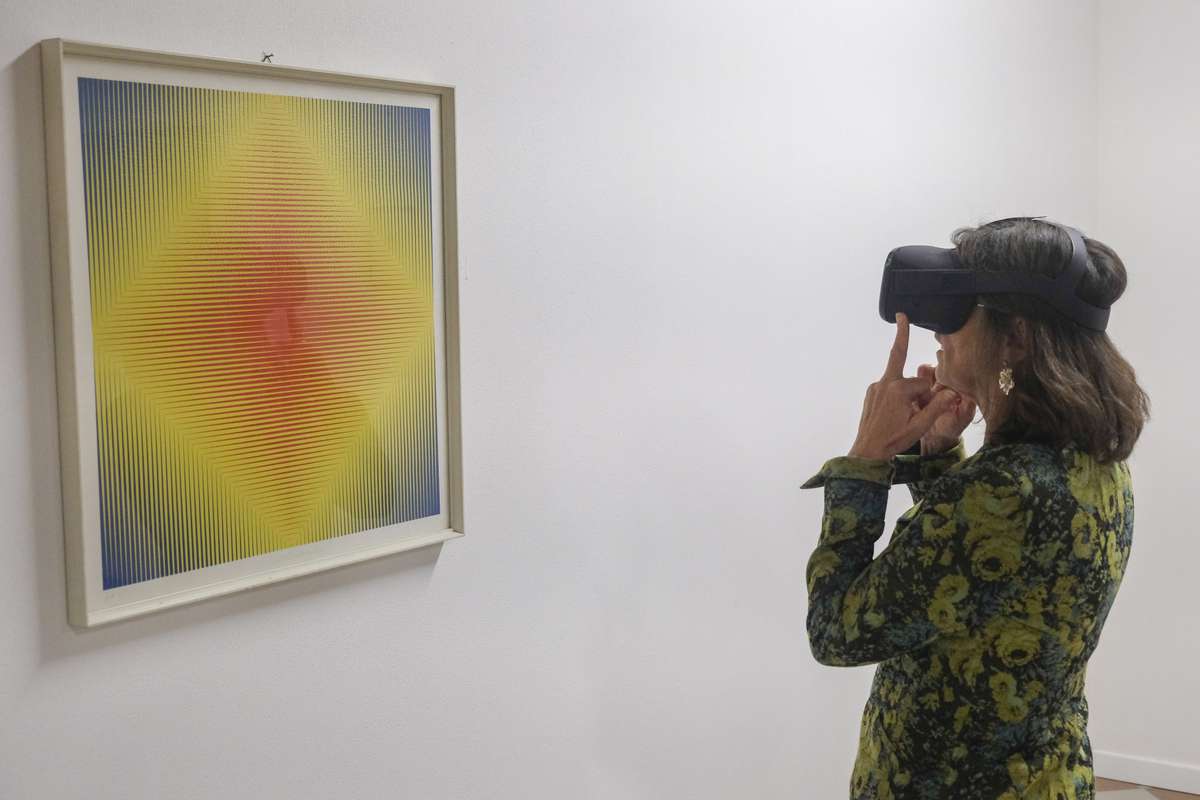
The virtual space is closely linked to real one. The lower floor, at the end of the path, is the link between virtual and real. Real artworks, such as a selection of paintings from post-war masters like Zigaina, Spacal and Alviani (coming from the Morandini Legacy for the first prototype) are mixed with virtual ones, like volumetric holograms of the sculptures, 360 ° immersive videos of performances and multimedia works.
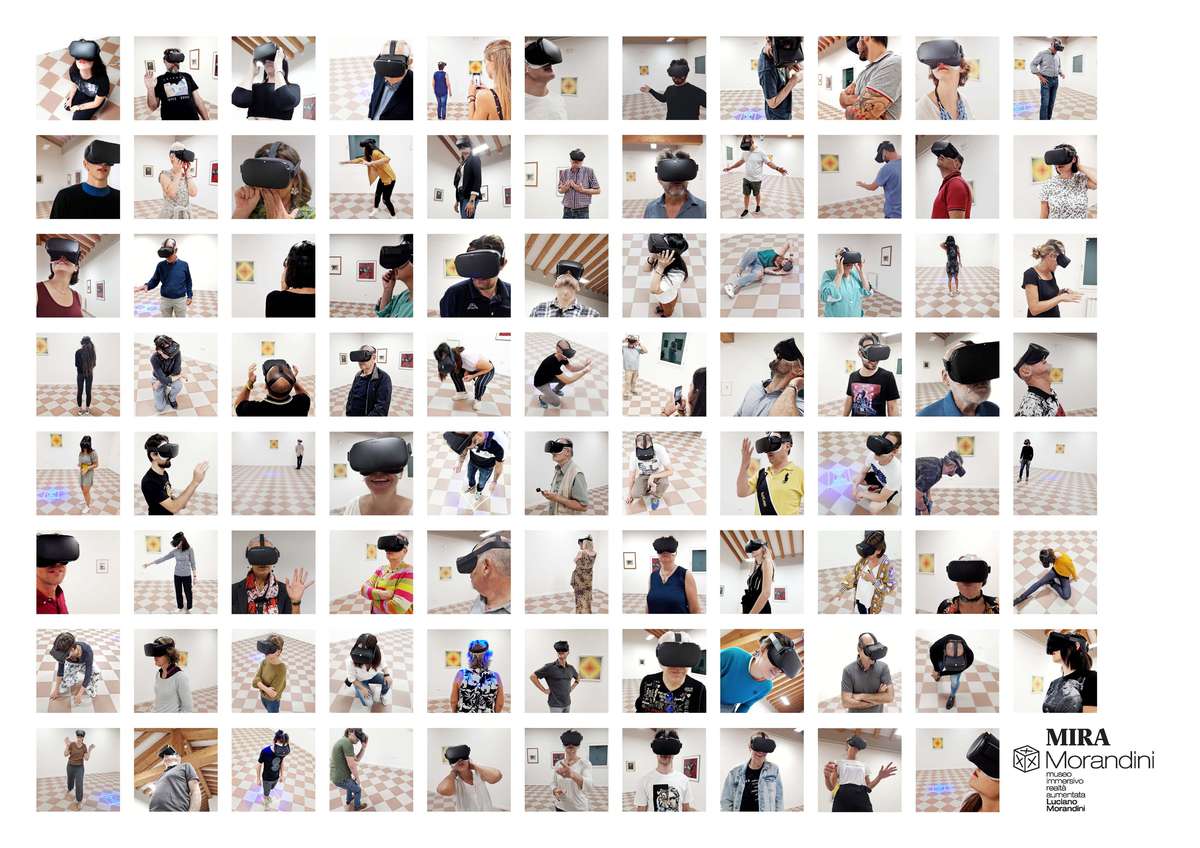
The first MIRA prototype has been dedicated to the intellectual and poet Luciano Morandini, has been presented in his hometown on the 10th anniversary of his death and first visited by his daughter Marina. The prototype has also been presented at the Politecnico di Milano and at the SOUL Co-working space. The prototype has been successfully tested more than 100 times with 100% of satisfied and impressed users.
M.I.R.A. Augmented Reality Immersive Museum
M.I.R.A. Augmented Reality Immersive Museum

- New alliances
MIRA sets a new alliance between architecture and technology: it makes possible to design and experience meta-spaces and non-physical based spaces. It gives both architects and user the possibility to imagine and experience spaces to (literally) fly over the foundations of architecture, to walk through its walls and boundaries and it can be experienced freely, without cables, like real museum spaces.
MIRA is a fully working prototype of how architects can think AR/VR/XR as not just a tool to visualize physical spaces, but as a final product, something to design, with attention to the spatial experience.
The prototype is part of the project "Hacking Real Space" funded by the Friuli Venezia Giulia Region on the Call of the European Fund POR FESR FVG 2014-2020, Action 2.1b.2 "Grant for the financing of personalized acceleration and company consolidation programs, aimed at the entrepreneurial development of projects of cultural value, aimed at cultural and creative companies".
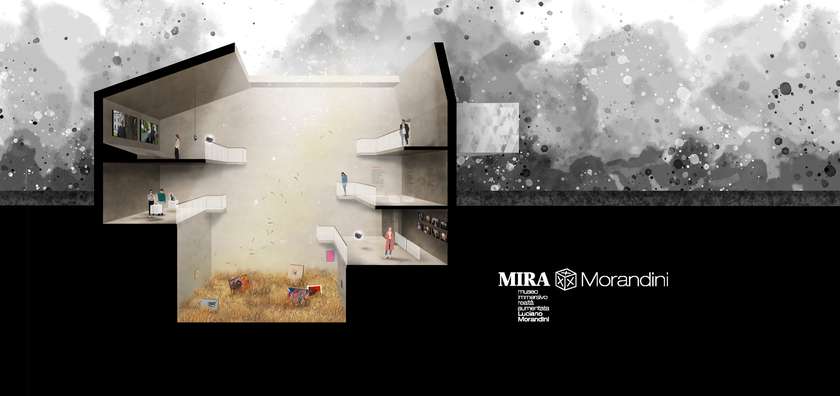
The visitor is immersed in a world that does not follow the same rules as the real one, where existing physical elements and virtual elements interpenetrate and complement each other. Once worn the virtual reality headset (the latest-generation Oculus Quest, released in May 2019), the space multiplies in height, generating further floors which divide, move away from each other and expand into the virtual space to create an exciting central space: a triple height void
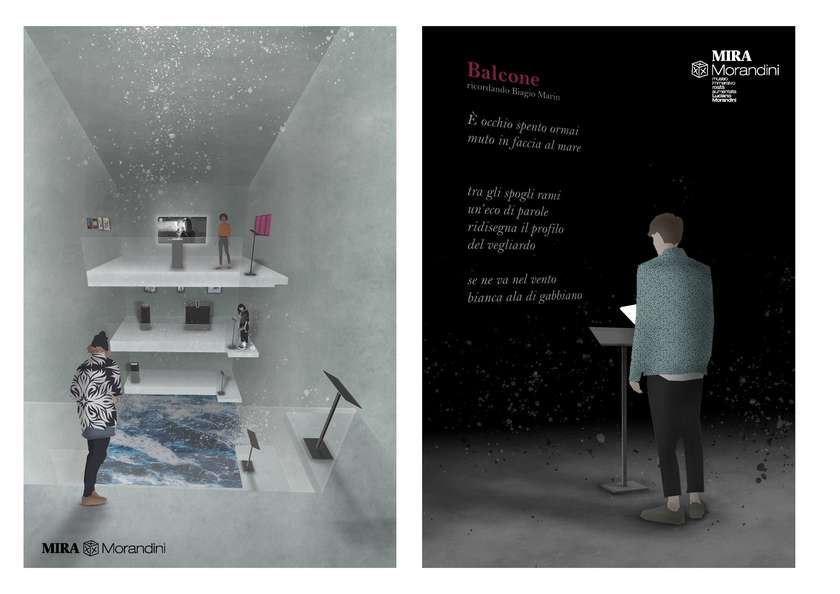
The central void allows the user to perceive the museum in its entirety and provide orientation and points of reference.
The museum is designed in sections as a sequence of floors, cut by a diagonal beam of light entering from the roof. Light creates a central void that defines a series of floors staggered in space, a "raumplan" of spaces with different size, height and character. Spaces tailored on the works exhibited and, at the same time, visually connected to each other.
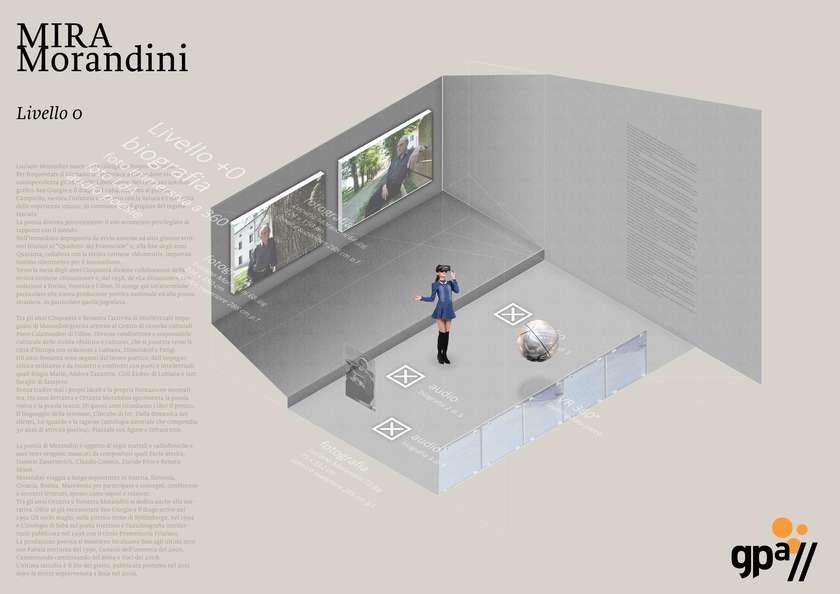
Movement between the different levels is possible through a series of virtual elevators, portals for teleportation -quoting Star Trek- which allow you to jump from one floor to another, almost immediately.
The width of the central void, while being shifted in space, is always constant: there is a fixed dimensional relationship between the various planes, obtained - in complementary pairs - by the subdivision of the real floor.

The virtual space is closely linked to real one. The lower floor, at the end of the path, is the link between virtual and real. Real artworks, such as a selection of paintings from post-war masters like Zigaina, Spacal and Alviani (coming from the Morandini Legacy for the first prototype) are mixed with virtual ones, like volumetric holograms of the sculptures, 360 ° immersive videos of performances and multimedia works.

The first MIRA prototype has been dedicated to the intellectual and poet Luciano Morandini, has been presented in his hometown on the 10th anniversary of his death and first visited by his daughter Marina. The prototype has also been presented at the Politecnico di Milano and at the SOUL Co-working space. The prototype has been successfully tested more than 100 times with 100% of satisfied and impressed users.